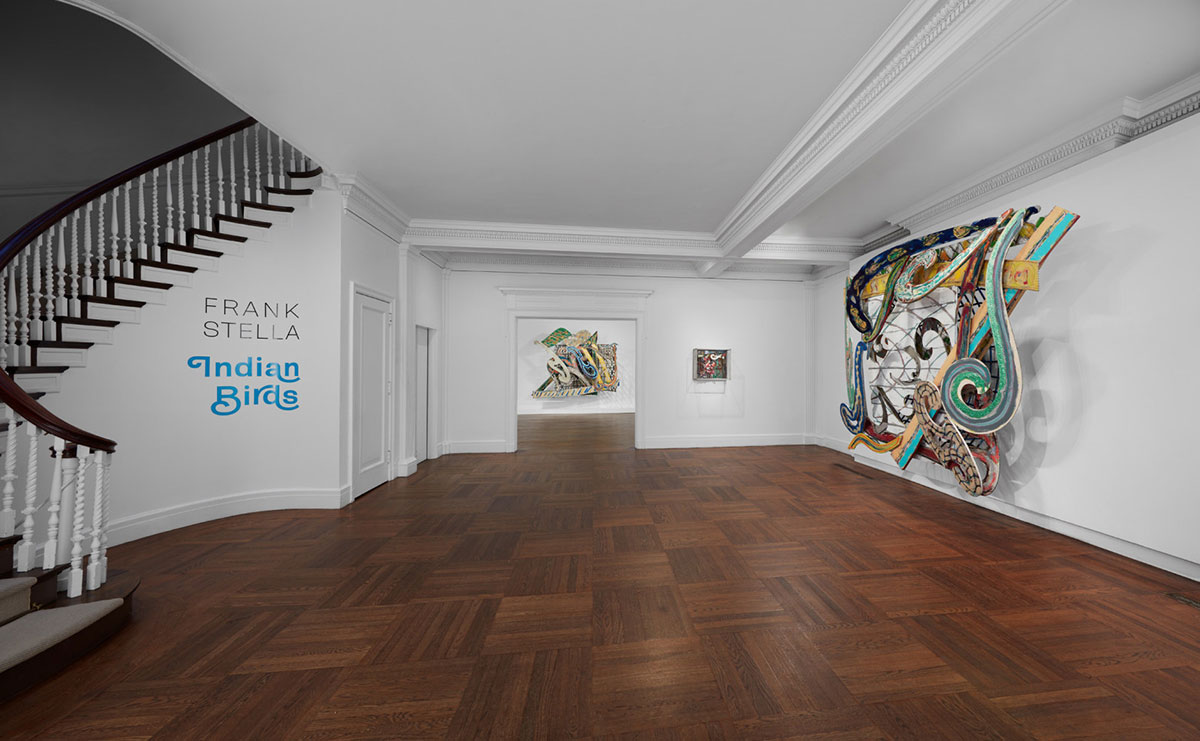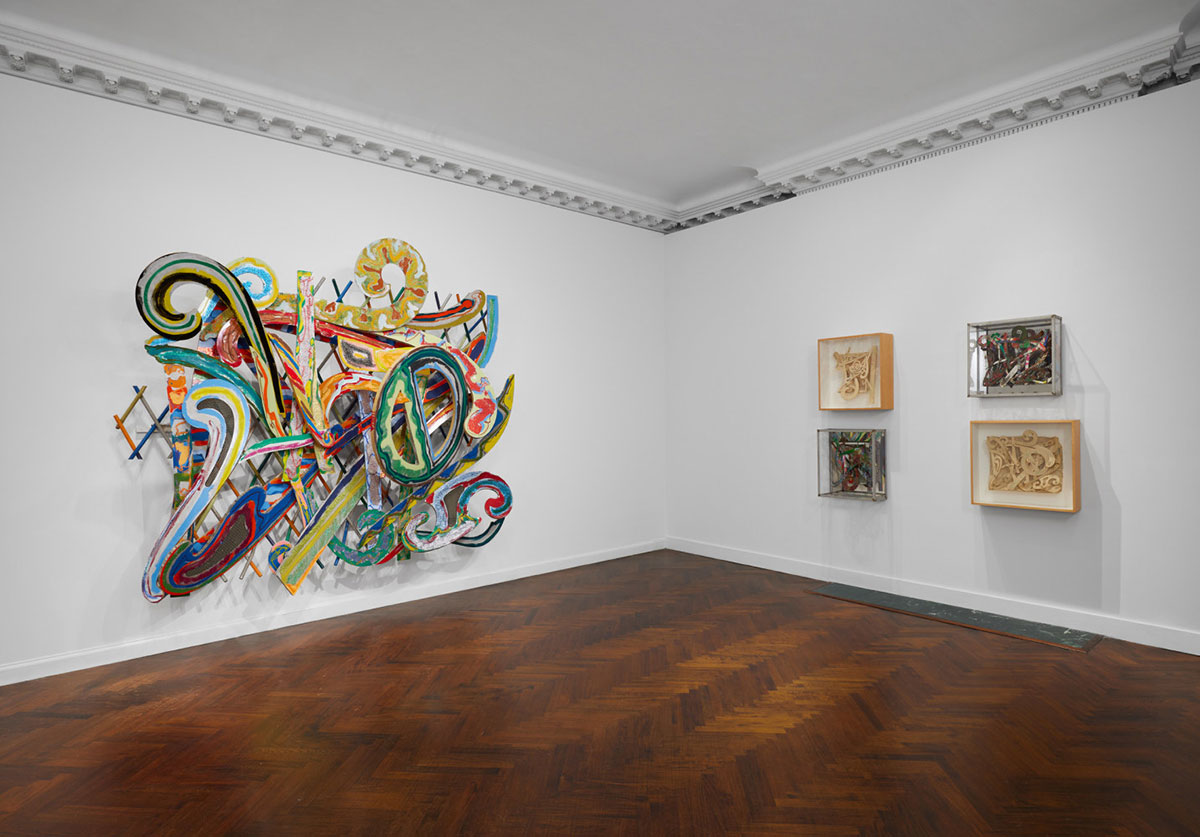ART CITIES: N.York-Frank Stella
 Frank Stella has played a major role in the development of American Abstraction during the 20th Century. During his nearly 60-year career, Stella has explored the possibilities of abstraction in paintings, sculpture, and prints that push the conventions of each medium beyond its assumed limits. Though often inspired by literature, music, science, and history, his art is never illustrative; he insists that each of his works contains all the information necessary to understand it. His ultimate goal is to reinvigorate painting by inventing a new kind of pictorial space.
Frank Stella has played a major role in the development of American Abstraction during the 20th Century. During his nearly 60-year career, Stella has explored the possibilities of abstraction in paintings, sculpture, and prints that push the conventions of each medium beyond its assumed limits. Though often inspired by literature, music, science, and history, his art is never illustrative; he insists that each of his works contains all the information necessary to understand it. His ultimate goal is to reinvigorate painting by inventing a new kind of pictorial space.
By Dimitris Lempesis
Photo: Mnuchin Gallery Archive
The exhibition “Indian Birds” presents six of Frank Stella’s series “Indian Birds”, alongside the artist’s archival drawings and maquettes for the series. The maquettes for the brilliant Indian Bird series were executed in October 1977, while the artist was a guest of the Sarabhai family at their residence in Ahmedabad, India. (A duplicate set of these maquettes was given by the artist to the Sarabhai Foundation.) Stella remembers the twelve days of his stay in Ahmedabad as “wonderfully productive.” The Sarabhais were generous in furnishing assistants, starting with four, the crew became twenty-four (including part-timers) , and the artist retains fond memories of the shared excitement of this collective participation. Stella had just begun to elaborate his ideas for this series when he departed for India. He carried with him a few drawings and a model (in paper and foamboard) for what eventually became the second in the series to be completed. Each model was first developed in its actual size as a series of superimposed drawings executed on transparent paper. Stella’s assistants then traced the forms and cut them out of scrap metal sheets. Most of the latter were tin-alloy sheets, silk-screened with misregistered and multiple over-printings of the names and logos of various soft-drink and food-processing companies. The characteristic shapes, like those of the preceding “Exotic Bird series” are all Irregular Curves, taken from instruments used by marine and architectural draftsmen. The majority of forms in the “Indian Birds” are Danish Ship Curves, but there are also Railroad Curves, used to plot the patterns on which rail bedding turns. The overall structure of the reliefs is tripartite: The “field” or background against which the Irregular Curves function — the structure that quite literally holds the reliefs together — is a half-cylinder of metal grillwork. The two forward edges of the grill support a flat pattern of shapes posed at right angles to the spectator’s line of vision (back cover, fig. A), which establish a picture plane, and maintain the pictorial character of the conception; it is formed of irregular curves in the smaller of two scales. Penetrating this “picture plane” at different angles, moving in front of and behind it, are a set of curves in a scale three times larger that constitute the third component. Odd bits of additional scrap such as wire, metal mesh, screening, and metal rods are also worked into the relief models. There are virtually no straight lines in the “Indian Birds” a trait that would seem to set them morpho logically in polar opposition to the Black, Aluminum, and Copper pictures with which Stella’s career began. But for all their arabesques, the Irregular Curves nevertheless constitute, like the “niches” that establish the step patterns in Stella’s earliest shaped canvases, a fixed, a priori vocabulary of forms. Thus Stella’s rigorous self-limitation here to these particular Irregular Curves is finally an extension, a more baroque exploitation, of his earlier methods —that of the Protractor Series especially. In the Indian Birds, as in all Stella’s prior series, the composition of these received forms is designed to provide a basis for the act of painting. “In order to start painting,” he insists, “I have to have a structure worth painting on. If it fails, as in all my earlier work, it fails by what happened before I begin painting.” While Stella is renowned for his prolific output, the “Indian Birds” are an exceptionally rare series consisting of only a dozen works, the majority of which are housed in esteemed museums and public institutions. Fabricated in New York between 1978 and 1979, the full-scale “Indian Birds” are monumental creations, each scaled 5.5x times larger than their respective maquettes. Characterized by an ornate grandeur, dynamism, and dramatic light and shadow, the “Indian Birds” have frequently sparked comparisons to Baroque art. Indeed, it was within this series that Stella vigorously explored the figure-ground relationship, pushing it to its utmost limits. Using a transparent gridded armature to suspend his technicolor and glittered metal curves, Stella created pictorial compositions that transcended the confines of two dimensions and challenge painting’s conventional notion of flatness.
Photo: Frank Stella, Maha-lat, 5.5X, 1978-1979, media mixed on metal relief, 87 3/4 x 111 x 38 1/2 inches (222.9 x 281.9 x 97.8 cm). Photography by Bill Orcutt. © 2023 Frank Stella / Artists Rights Society (ARS), New York
Info: Mnuchin Gallery, 45 East 78th Street, New York, NY, USA, Duration: 4/10-9/12/2023, Days & Hours: Tue-Sat 10:00-18:00, www.mnuchingallery.com/


